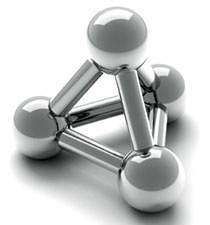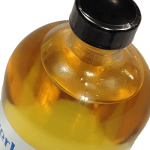Concerning colloidal silver, I’ll give you my understanding. I met Dr. Bob Beck in California in 1994. I attended a regular “breakfast meeting” on Tuesday in Costa Mesa for a number of years from 1994 to approximately 2000. I didn’t go every week, but I went often, especially in the mid 1990s. Bob expounded on his research and I got to meet a lot of interesting researchers and science orientated people there, in addition to regular folks who just wanted to listen in.
Bob played a predominant role in showing people how to make colloidal silver yourself at home using simple DC electrolysis. He gave hundreds of talks on radio, TV and at health expos, etc. The only reason you see such an explosion of people in USA, Australia, New Zealand, etc. making and talking about CS production is because of Bob Beck. I wrote an article called Silver, The Forgotten Antibiotic around 1995 that was copied and plagiarized by many web sites and health newsletters in America, Australia, New Zealand, and England. I was essentially re-stating the info I had gleaned from Bob Beck and other writers.
The reason I’m talking about Bob is that his thought process was always logical and analytic. He made it clear that silver atoms would strip off silver wire in a solution of water at 1.26 angstroms when a DC voltage was applied between two silver electrodes in the water. The process seemed to work reasonably well at 30 volts DC, but it would still happen at a lower voltage or a higher voltage. It also worked with an AC current. Another researcher I met named Merlin Wolf found that heating the water up to near boiling caused the reaction to occur much faster. He also found that using distilled water and not using salt to ionize the water was wiser, as the salt only encouraged the formation of silver chloride salt. I also found out from Peter Lindermann many unusual alchemical properties of silver and incorporated his findings into my protocol and instructions on making CS.
In the early part of the 20th century they made silver solutions by grinding silver into a very fine powder and dumping it into water and sometimes added some weak acids to increase the solubility. You could also attach the silver atom to an amino acid (or protein), such as silver nitrate, which has been around since the end of the 19th century, for example.
There are many web sites (and Youtube videos) authored by people who posture themselves as authorities on colloidal silver, but they are essentially half baked dilettantes who are making statements which are either untrue, partially true, or very misleading. They say things that make no logical sense. For example, the “controversy” about “ionic” versus “colloidal” is one such nonsensical argument that is confusing and perplexing tons of people who are new to the subject of colloidal silver and are trying to understand more about this topic. “Non ionic” silver, we are told by these internet experts, is suppose to be a much more desirable thing than “ionic” silver. “Nano” size particles is another topic that I’ll mention in a moment.
Clarification of vocabulary.
Colloid solution: is characterized as tiny particles that remain suspended in a solution (E.g. water) and are evenly diffused throughout the solution. The particles do not settle to the bottom or otherwise precipitate out of solution. Such a solution can also be called a “colloidal” solution, as in colloidal silver (which many people incorrectly pronounce “colloi-di-al” instead of “colloi-dal”).
Electrolysis: when an electric voltage is applied between two silver wire electrodes sitting in a glass of water, silver atoms will strip off one silver electrode wire as electric current passes through the solution to the other silver wire electrode. In so doing, an electron will leave the outer orbit of the silver atom that is leaving the emitting wire and going into the solution. When an atom loses (or gains) an electron from its outer orbit, it is then called an “ion.” Now we have a silver “ion” (which remains a silver atom) with a net positive charge in the water because it has lost an electron from its outer orbit. Technically, it’s called a cat-ion because it has a net positive charge.
A couple of conclusions:
If the atoms are suspended in the solution (versus DISSOLVED in the solution), it’s called a colloid or colloidal solution. Where is the logic in comparing “colloidal” silver to “ionic” silver? You’re being confused by what you’re reading because the people writing this stuff don’t have a basic understanding of what the words colloidal and ionic mean.
A solution filled with silver ions (cations) so small that they diffuse throughout the solution (colloidal) evenly and repel each other because of their net positive charge is called an “ionic” solution. The silver atoms in the water are in the form of ions, and not “non-ionic” silver atoms. “Non-ionic” silver, by definition, must have the full compliment of electrons in its outer orbit. How can an atom with its full compliment of electrons leave the wire surface and pass into the solution in the first place? The very action of electrolysis itself causes the silver atom to lose an electron and become an ion. How can some silver cations in that solution recapture an electron in its outer orbit (and become “non-ionic”) while others cannot?The internet colloidal silver gurus never seem to explain that because they can’t.
The only way that I’m aware of placing silver atoms – with their full compliment of outer ring electrons – is to grind or powder the silver in some fashion into the smallest size particles possible and dump it into the water, similar to how it was done in the early part of the 20th century. If you’re making colloidal silver using an electrolysis process, you’re producing silver IONS in the water.
For argument sake, let’s accept the notion that “non-ionic” silver atoms are deposited into the water by some mysterious, unexplained means. So what? Please tell me what is the germicidal virtue of a non-ionic silver atom versus a silver ion?
I’ve already explained how the “controversy” about colloidal silver versus ionic silver is bogus, because you’re comparing apples and oranges. The same goes for the assumed benefits of “non-ionic” versus ionic silver, another bogus controversy.
The fact is pathogenic organisms have a net negative charge.
A negative charged pathogen will ATTRACT a positive charged silver ion. Therefore, the silver can “find” the pathogens faster if they are in ionic form. Thus, silver ions have a more POWERFUL germicidal effect than do non-ionic silver atoms. This was PROVEN in a study conducted in Italy in 1988 and reported by Peter Lindemann in one of his many essays on colloidal silver.
Nano size silver: It was more commonly called mono atomic silver a few years ago. When you produce colloidal silver using a HIGH VOLTAGE AC CURRENT (8-12 KV) , you fracture the atom clusters into much smaller units, even down to one atom, thus the name. You still produce silver cations, but this time they are clustered in such small bundles that you no longer get a reflection of the yellow wavelength and therefore the solution will look perfectly clear, whether it’s a highly concentrated or low concentrate solution.
The yellow color you got is typical of colloidal silver made with a low voltage (usually DC) process, using distilled water. The yellow gets darker as you increase the ppm content of the silver ions.
You can send a lab a sample of low voltage colloidal silver and get back a report on the size of the particles. You can also measure the RELATIVE ppm with a TDS meter. Assuming you started with triple distilled water, if you just add silver ions to it, the ppm registered on the TDS meter will be the relative concentration of the silver ions. We then label the measurement as xxx ppm, TDS, to tell you how it was measured. There are some companies that sell a meter that claims to accurately measure the ppm of colloidal silver, but I haven’t checked them out yet.
The degree of saturation of the yellow color is a cheap and easy way to gauge the concentration. You could rig a photo diode to give you a readout and plot your ppm if you wanted to do that. I keep a series of lab measured vials with different ppm of CS and have them marked on the vial. You just hold up a vial of known ppm against the batch you are making and can quickly determine the ppm by eye. It’s not hard at all and you save the expense of sending out lab samples.
By Ken Adachi.
Click here for more articles about colloidal silver.
Click here to visit the Colloidal Silver Success Stories Facebook group.




Leave a Reply
You must be logged in to post a comment.